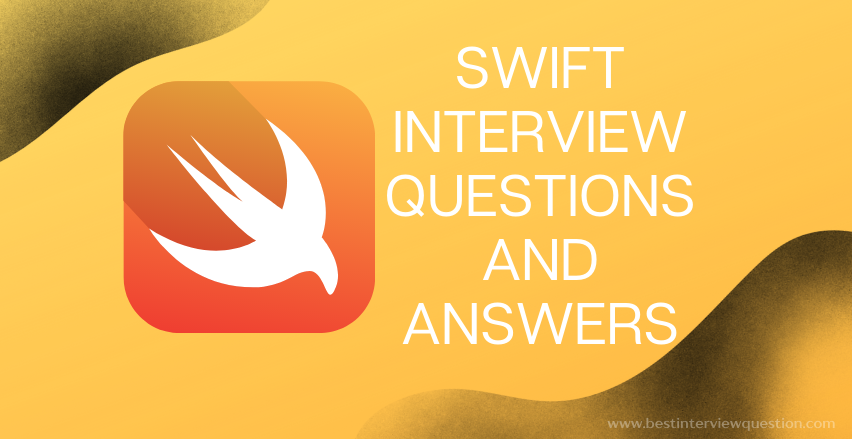Swift Interview Questions and Answers

Swift is the latest, open source programming language from Apple, which is very easy to learn. The language is available for developing OS X, iOS, and watchOS apps. Apps built on Swift can be run on devices dating back to iOS 7 or later and OS X 10.9 or later. Swift allows developers to prototype and write apps faster and with fewer bugs than ever before.
Advantages
- Safer, faster and more powerful
- Can co-exist alongside Objective-C
- Innovative features
- APIs are easier to maintain and read
- One of the best ways to code OS X and IOS apps
Most Frequently Asked Swift Interview Questions
Three collection types are available - Arrays, Sets and Dictionaries. These are used to store different collections of values. These three collection types are mutable and are clear about the types of keys and values associated with them.
You can make a property optional by declaring a question mark “?” in the code. If a property does not hold any value, then this symbol “?” can help in avoiding runtime errors.
The multiline comment enables the programmer to comment out large blocks of code easily.
A forward slash, an asterisk and then a colon is opening comment - (/*:)
An asterisk and forward slash is a closing comment – (*/))
It is the process of creating an instance of class, enumeration or structure. It involves setting an initial value for the existing property and performing initialization before the new instance is available for use. The initialization process can be done by defining initializers.
Open the storyboard file in Xcode and drag in a “Table View” object from the Library. Position it full screen and make sure the edges line up. Now, adjust the height by dragging the edge and creating space at the top. Try running the app in the simulator and you shall see an empty table view.
Floating point numbers have a fractional component and they represent a greater range of values than integer types.
There are two kinds of floating point numbers – Double and Float.
Double represents a 64-bit floating point number. It is used when values are large.
Float represents a 32-bit floating point number. It is used when values do not need 64-bit precision.
The classes in Swift are not inherited from the base class. If you define any class without specifying its superclass, it automatically becomes the base class.
Any property whose initial values are not calculated until the first time it is used is called a lazy stored property. Such properties can be declared by writing the lazy modifier. These properties are useful when the initial value of a property is dependent on external factors whose values are unknown.
- Supports all kinds of data and checks for equality.
- When a case is matched, the program exits from the switch and does not continue to check.
- Switch statements must be exhaustive, and you must cover all possible values for the variable.
- No break is required because there is no fallthrough.
These are control flow statements that can be a great addition if you are doing defensive style programming. These statements evaluate a boolean condition and proceed with the execution only if the evaluation is real. Such statements always have an else clause.
guard let courses = student.courses! else {
return
}
Development History
Apple started working on Swift in 2010. Swift is said to be more than two times faster than its rival Objective-C, and more than eight times faster than Python. The first version of Swift was released in September 2014.
Latest Version: Apple announced the release of Swift 5.0.